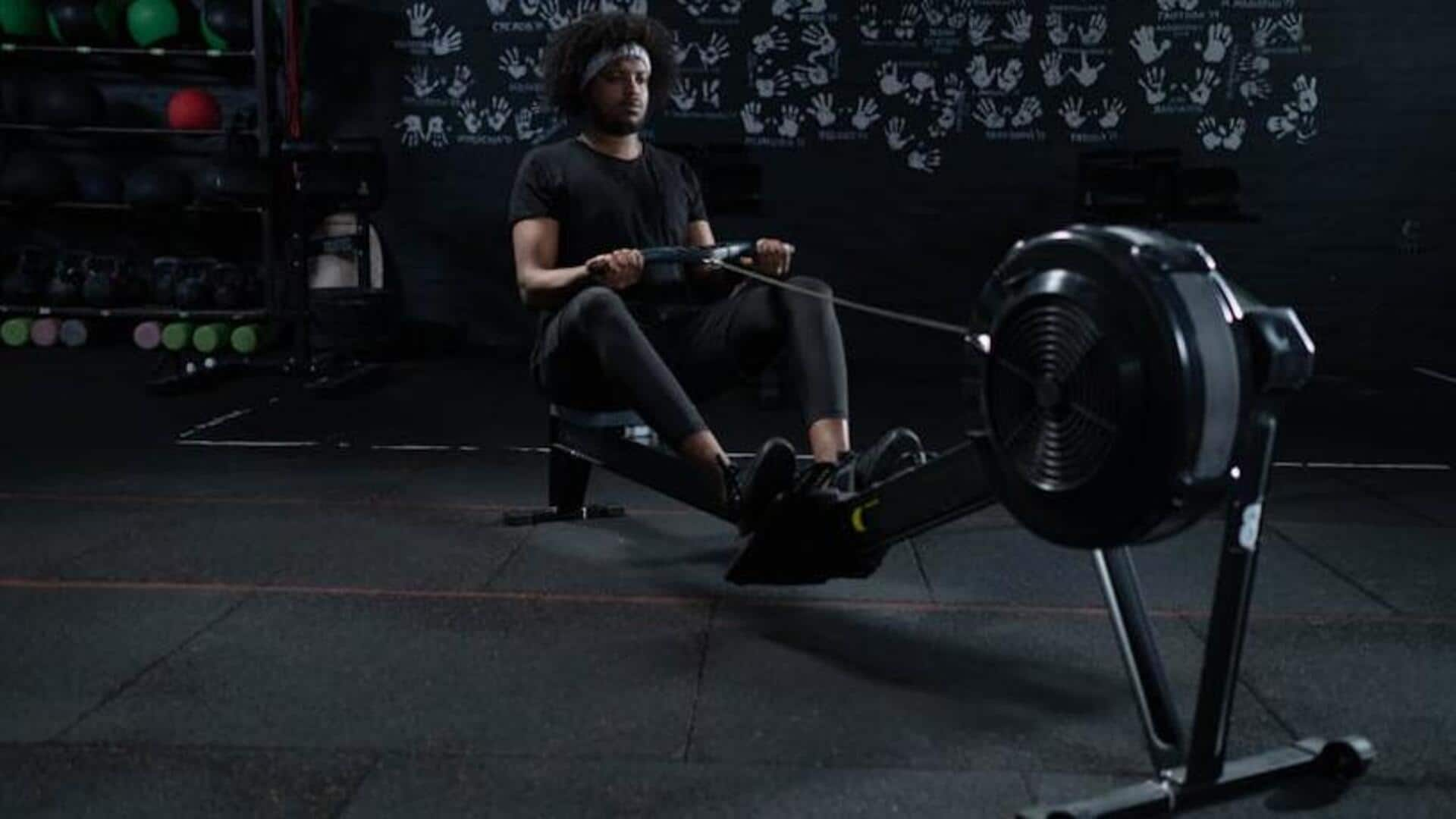
Unveiling rowing machine workout benefits
What's the story
Rowing machines deliver the best of both worlds: heart-pumping cardio and strength training. They mimic the motion of rowing a boat, which gives you a full-body workout that hits all the major muscle groups. Read on to discover why you should make friends with this often-overlooked piece of gym equipment.
#1
Full body engagement
Rowing is a full-body workout, one of the few exercises that work your upper and lower body at the same time. When you pull the handle towards your body, your back, shoulders and arms get a good workout as your legs push against the base of the machine. This dual action means you get a balanced workout. You won't overwork some muscles and ignore others.
#2
Boosts cardiovascular health
Regular use of a rowing machine greatly improves cardiovascular fitness. The constant motion raises your heart rate, leading to increased blood flow and lung function. This ultimately strengthens your endurance and lowers the risk of heart disease. It's a super-efficient way to get your heart racing without stressing your joints too much.
#3
Calorie burning efficiency
If you're looking to shed pounds or manage your weight, rowing is a secret weapon. This high-intensity, full-body workout torches calories like nobody's business. You can easily burn hundreds of calories in a single session, depending on the intensity and duration of your workout. This makes rowing a fantastic choice for anyone looking to lose or maintain weight, providing an efficient path to your fitness goals.
#4
Low impact on joints
Unlike high-impact exercises such as running or jumping rope, which can be hard on the joints, rowing is a low-impact activity. The seated position greatly reduces strain on knees and ankles while still providing a powerful workout. This makes rowing machines an excellent option for people of all fitness levels, including those recovering from injuries or with conditions that limit high-impact exercise.